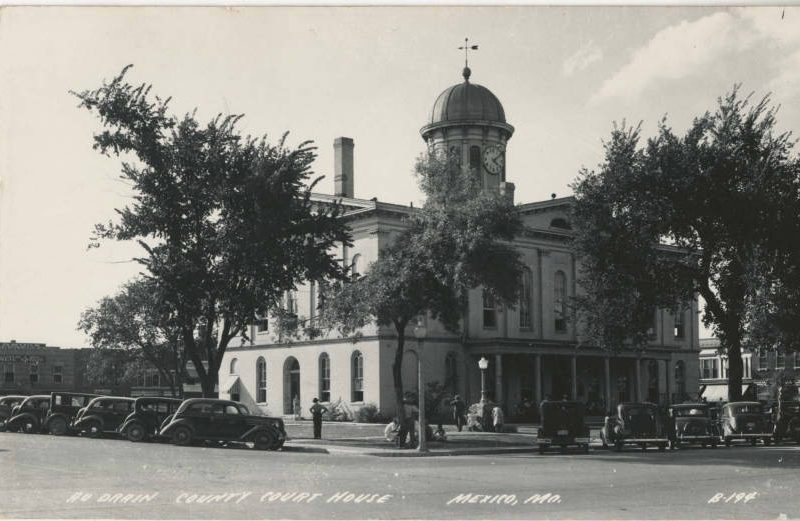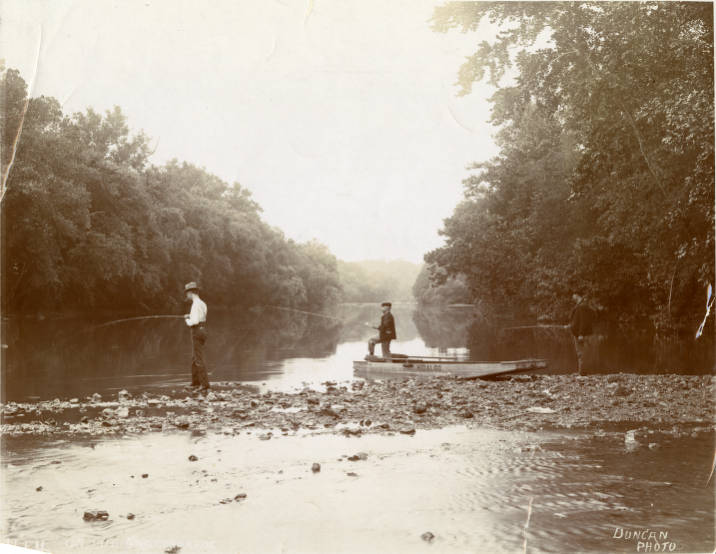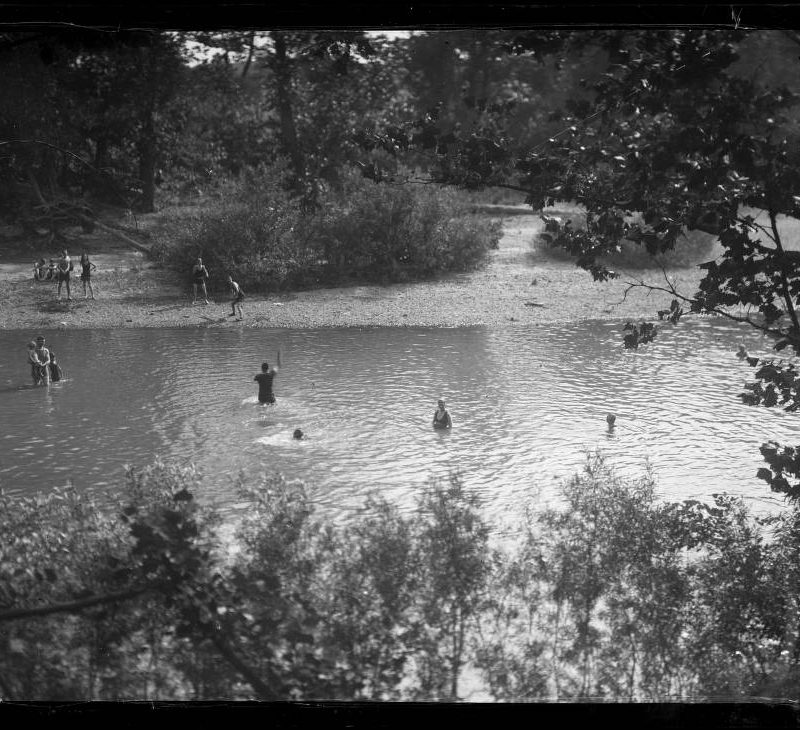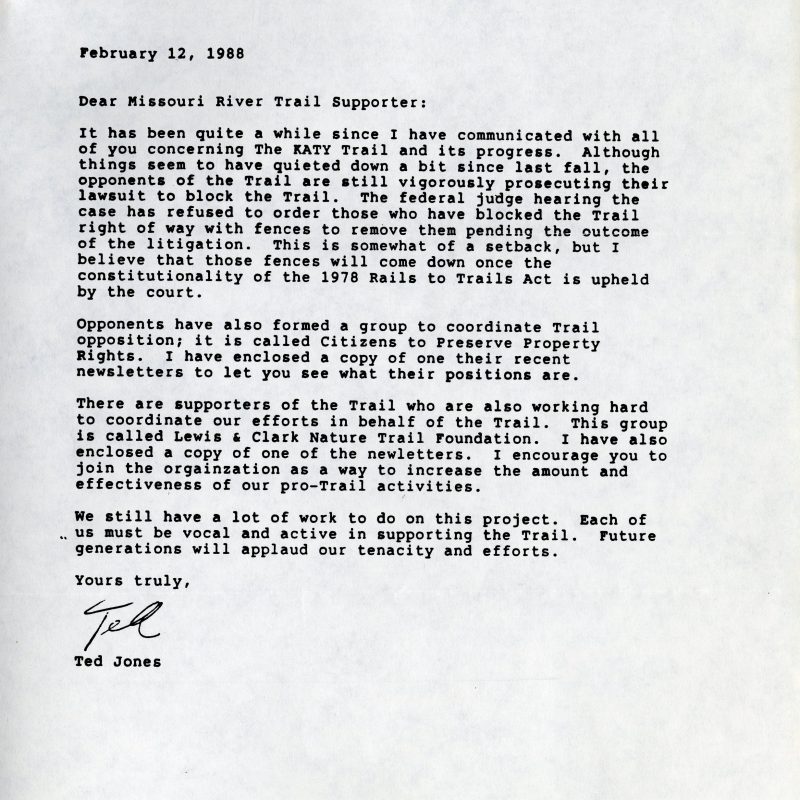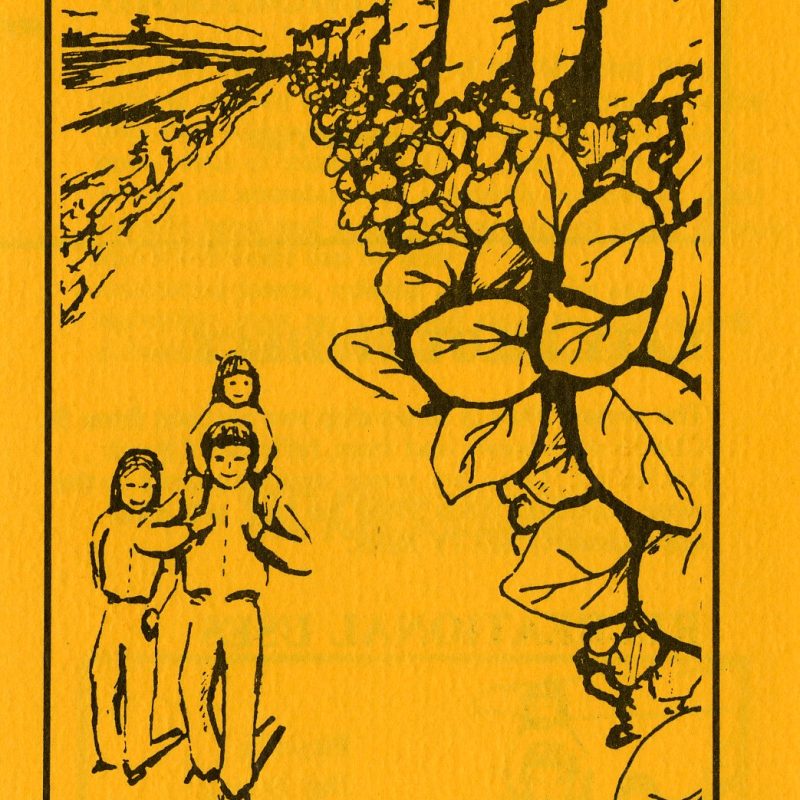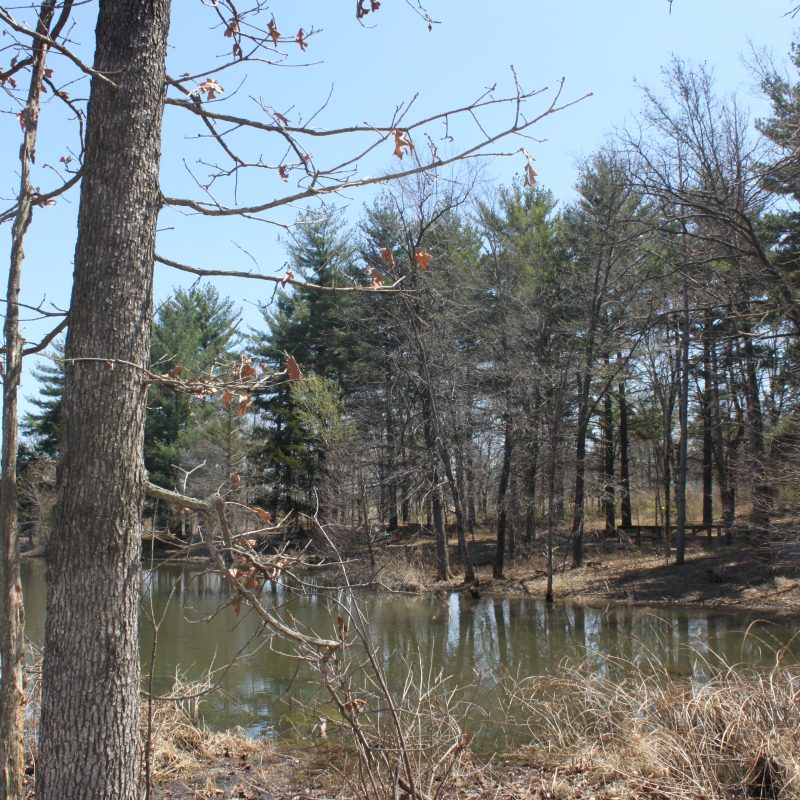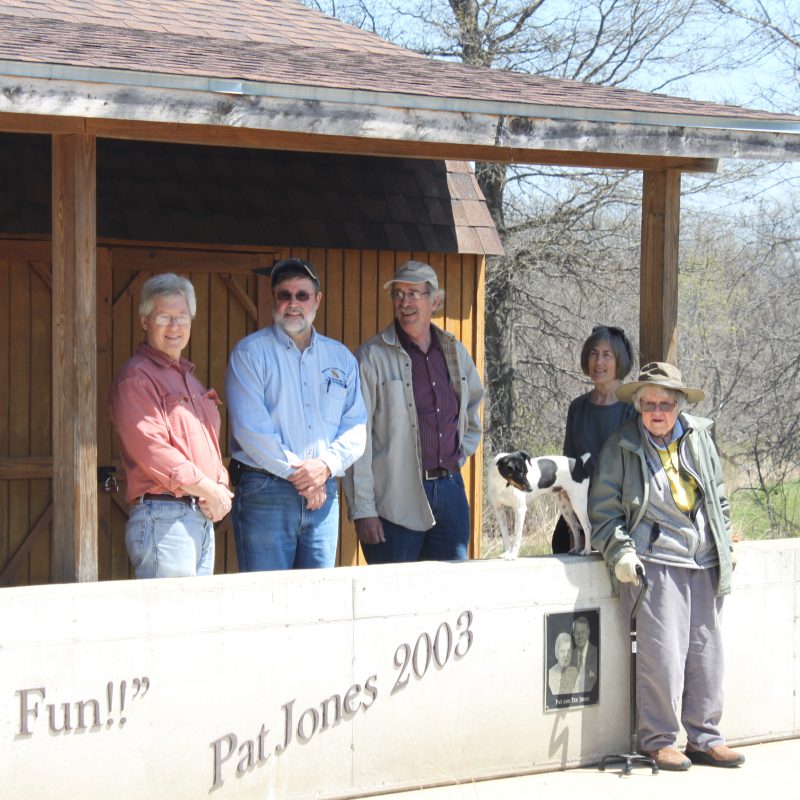![Edward “Ted” and Hilda “Pat” Jones outside of their home at Williamsburg, Missouri [Image courtesy of the Missouri Department of Conservation]](https://historicmissourians.shsmo.org/wp-content/uploads/2023/03/Photo-Together-NEED-PERMISSION.jpg)
Edward "Ted" & Hilda "Pat" Jones
Introduction
Edward “Ted” Jones Jr. was known around the world for his success as the managing partner of Edward D. Jones & Co., an investment company founded by his father in St. Louis. Together, Ted and his wife, Hilda “Pat” Jones, also shared a commitment to conservation and education. They used the wealth they earned in business to benefit the public through the creation of the Young Conservation Area, Prairie Fork Conservation Area, and Katy Trail State Park. These outdoor places invited Missourians to “Learn, Get Dirty and Have Fun.”
Early Years and Education
Edward “Ted” Jones Jr. was born in St. Louis, Missouri, on December 18, 1925, to Edward D. Jones Sr. and Ursula Griesedieck. His father started Edward D. Jones & Co. only a few years before Ted’s birth. His mother was an heir to the Griesedieck Western Brewing Company, a St. Louis brewery which was best known for producing Stag Beer.
Hilda “Pat” Young was born in St. Louis on November 16, 1925, to Truman Post Young and Hilda Jamieson. Her father was a partner at the law firm Thompson, Mitchell, Thompson & Young in St. Louis. He also served in government as an assistant US attorney and associate city counselor. Her mother was originally from Philadelphia and worked as an ambulance driver for the American Woman’s Hospital Association during World War I. Pat met Ted during an organized bicycle trip to the Ozarks while they were both still in high school. From the beginning of their relationship, they shared a fondness for recreation and the outdoors.
After graduating from the Taylor School in St. Louis in 1943, Ted took summer courses at the University of Missouri in Columbia before enlisting in the US Merchant Marines during World War II. As the war drew to a close, he enlisted in the US Army through 1946. Upon his honorable discharge, Ted went back to the University of Missouri, intending to major in agriculture. After a year of study, however, his parents withdrew him from the university and secured a job for him as a page, or young assistant, at the New York Stock Exchange. The experience he gained from this job helped him when he returned to Missouri in 1948 to become a broker for Edward D. Jones & Co. As a broker, he made financial deals for the company from an office he established in Clayton, Missouri, a St. Louis suburb.
Pat graduated from Mary Institute in St. Louis in 1943. Interested in soil science, she completed coursework at the Pennsylvania School of Horticulture and later earned a bachelor’s degree in agriculture from the University of Missouri in 1950. That same year, Ted and Pat married and moved to Montgomery City, Missouri, where Ted opened an Edward D. Jones & Co. office.
Edward D. Jones & Co.
Edward D. Jones & Co. had been started by Ted’s father in 1922. After graduating from New York University and serving in the US Navy during World War I, Jones Sr. worked in the bond and investment business. Feeling that his business leads and investment advice went unnoticed by his employers, he quit and formed his own company.
The first Edward D. Jones & Co. office was located in downtown St. Louis and featured one room, a desk, three chairs, and a hat rack. Jones Sr. worked to make the new company a brokerage firm that could sell various investments to match whatever the company’s clients might need. By the mid-1940s the company had merged with the St. Louis–based Whitaker & Co. and become part of the New York Stock Exchange, the nation’s largest market for buying and selling shares of stock in businesses.
Branching Out
From his start with Edward D. Jones & Co. in 1948, Ted Jr. rose quickly within the company. Feeling that it and many other investment companies overlooked rural America, he frequently took to the road in his car, visiting neighboring communities and selling securities from his “office on wheels.” His hard work and patience soon paid off. Ted was soon training other company brokers to travel throughout Missouri to meet clients, particularly farmers and small business owners. In the 1950s he took this idea to a new level when he pushed for more branch offices to serve clients with a more personal touch closer to where they lived. The first Edward D. Jones & Co. branch office opened in Mexico, Missouri, in 1957. From its origins, the concept grew slowly but steadily within the company. By 1986, nearly thirty years after the first branch office opened, the company had about a thousand branches around the United States.
In 1968, Ted succeeded his father as managing partner, though his father continued to be involved in the company’s day-to-day affairs for the remainder of his life. In 1980, Ted stepped down and ceded his managing partner role in Edward D. Jones & Co. to John Bachmann.
Love of the Outdoors
Despite growing up in the metropolitan area of St. Louis, both Ted and Pat held a deep love for the outdoors. Edward D. Jones Sr.’s youth on an Ohio farm inspired his own interest in agriculture. He often took his family, including Ted, to a 700-acre farm in Callaway County, Missouri, where they raised mules and cattle. Ted’s focus on agriculture and conservation as an adult came from this early connection to farming.
Pat’s family took many trips to their own farm in Jefferson County, Missouri. As Pat remembered later in life, the family went to their land near the Meramec River almost every weekend. After Pat’s father died in 1942, her mother, Hilda, eventually moved to the property and became a vocal opponent of the US Army Corps of Engineers’ plan to place several dams on the Meramec River.
After moving to Montgomery City, Ted and Pat frequently made the short drive to his family’s Callaway County farm. They later built a house on the property at Williamsburg and devoted most of their spare time to agriculture and farming. The farm remained their home for the rest of their lives.
The Katy Trail
In 1968, around the same time that Ted Jones became managing partner of Edward D. Jones & Co., Congress passed the National Trails System Act. Within two decades, trail advocates in Missouri pushed for state officials to use this legislation to convert the right-of-way of the former Missouri-Kansas-Texas Railroad tracks into a recreation trail. Supporters also rallied around a smaller rails-to-trails project in Columbia, Missouri, that converted a spur of the Missouri-Kansas-Texas Railroad line into a nature trail. Opponents of what would come to be called the Katy Trail included farmers and landowners along the right-of-way who demanded that the land be returned to the original owners.
Concerned that legislators in the Missouri General Assembly would not approve enough money to fund the trail and that ongoing lawsuits over the right-of-way would stop the project, Ted and Pat Jones donated more than $2 million to cover expenses related to finishing the trail. On April 28, 1990, Ted and Pat attended the official opening of Katy Trail State Park. Though he was able to witness the creation of the Katy Trail, Ted Jones did not live long enough to see its completion. He passed away on October 3, 1990, less than six months after the trail’s grand opening. For his business legacy and his role in creating the Katy Trail, Ted Jones was inducted into the Hall of Famous Missourians in 2015.
“Prairie Godmother”
In addition to supporting the Katy Trail, the Joneses also promoted conservation in Missouri through several gifts to various private and state organizations. In 1986, they donated land that had been the Young family’s farm in Jefferson County to the Missouri Department of Conservation to form the Young Conservation Area. A decade later, the Joneses’ farm in Callaway County was donated to the Missouri Department of Conservation to establish the Prairie Fork Conservation Area. Prairie Fork became a place for conservation education by the department, the University of Missouri, and the Prairie Fork Trust.
For her work in conservation and on environmental causes, People magazine dubbed Pat Jones the “Prairie Godmother.” The Conservation Federation of Missouri honored her with its Outstanding Lifetime Achievement Award. She was also chosen for the Frederick B. Mumford Award by the University of Missouri’s College of Agriculture, Food, and Natural Resources and the York Spirit of the Wilderness National Conservation Award by the Missouri Conservation Heritage Foundation. The last award now bears her name: the Pat Jones/York Spirit of the Wilderness Award. She remained active in the day-to-day operations of the Prairie Fork Conservation Area until her death on December 17, 2018.
Legacy
To celebrate the Joneses’ commitment to conservation and their support of the Missouri state park system, two places for outdoor recreation have been named in their honor: Edward “Ted” and Pat Jones Confluence Point State Park, where the Mississippi and Missouri Rivers meet north of St. Louis, and the Pat Jones Pedestrian/Bicycle Lane on the Missouri River Bridge linking Jefferson City to the Katy Trail.
Together, Ted and Pat Jones are remembered for their business success and their generosity in supporting conservation, parks, and outdoor recreation. Their legacy is very much connected not only to the growth of Edward D. Jones & Co. as a leading financial and investment firm, but also to the Katy Trail and other places that encourage Missourians to experience the natural environment of the state.
Text and research by Sean Rost
References and Resources
For more information about Edward “Ted” and Hilda “Pat” Jones’ life and career, see the following resources:
Society Resources
The following is a selected list of books, articles, and manuscripts about Edward “Ted” and Hilda “Pat” Jones in the research centers of The State Historical Society of Missouri. The Society’s call numbers follow the citations in brackets.
Articles from the Newspaper Collection
- Burkhardt, Dan. “They adopted the state.” St. Louis Post-Dispatch. January 1, 2019. p. A11. [Reel # 58238]
- “Edward D. Jones Sr.; Founded Financial Firm.” St. Louis Post-Dispatch. October 12, 1982. p. 5C. [Reel # 43635]
- Gallagher, Jim. “Edward D. Jones Dies; Headed Brokerage Firm.” St. Louis Post-Dispatch. October 4, 1990. p. 1, 14. [Reel # 43973]
- Nevils, Emily. “Conservationist, benefactor Pat Jones dies.” Columbia Missourian. December 19, 2018. p. 2A. [Reel # 58139]
- Christensen, Lawrence O., William E. Foley, Gary R. Kremer, and Kenneth H. Winn, eds. Dictionary of Missouri Biography. Columbia: University of Missouri Press, 1999. pp. 439. [REF F508 D561]
- Katy Trail State Park Collection (C0003)
The Katy Trail State Park Collection contains legal documents, newspaper clippings, promotional materials, and correspondence related to the development of the Katy Trail State Park in Missouri. - Katy Trail State Park Collection (CA6007)
The Katy Trail State Park Collection contains legal documents, newspaper clippings, promotional materials, and correspondence related to the development of the Katy Trail State Park in Missouri. - Missouri Environment Oral History Project (C3966)
The Missouri Environment Oral History Project documents agriculture, conservation, preservation, environmentalism, and land and natural resource use in Missouri. Hilda “Pat” Jones participated in an oral history for the collection in 2014 (see CD 88, 89).
Outside Resources
These links, which open in another window, will take you outside the Society’s website. The Society is not responsible for the content of the following websites:
- Edward Jones
This webpage features a brief overview of Edward D. Jones & Co., as well as an extended history section on the company and the Jones family. - Edward “Ted” and Pat Jones Confluence Point State Park
This webpage contains relevant information about the history, management, and operations at Edward “Ted” and Pat Jones Confluence Point State Park. - Katy Trail State Park
This webpage contains relevant information about the history, management, and operations at Katy Trail State Park. - Missouri House of Representatives/Hall of Famous Missourians
This webpage features short biographies of individuals inducted into the Hall of Famous Missourians, including Edward “Ted” Jones. - Prairie Fork Conservation Area
This webpage contains relevant information about the history, management, and projects undertaken at Prairie Fork Conservation Area. - Young Conservation Area
This webpage contains relevant information about the history, management, and operations at Young Conservation Area.




